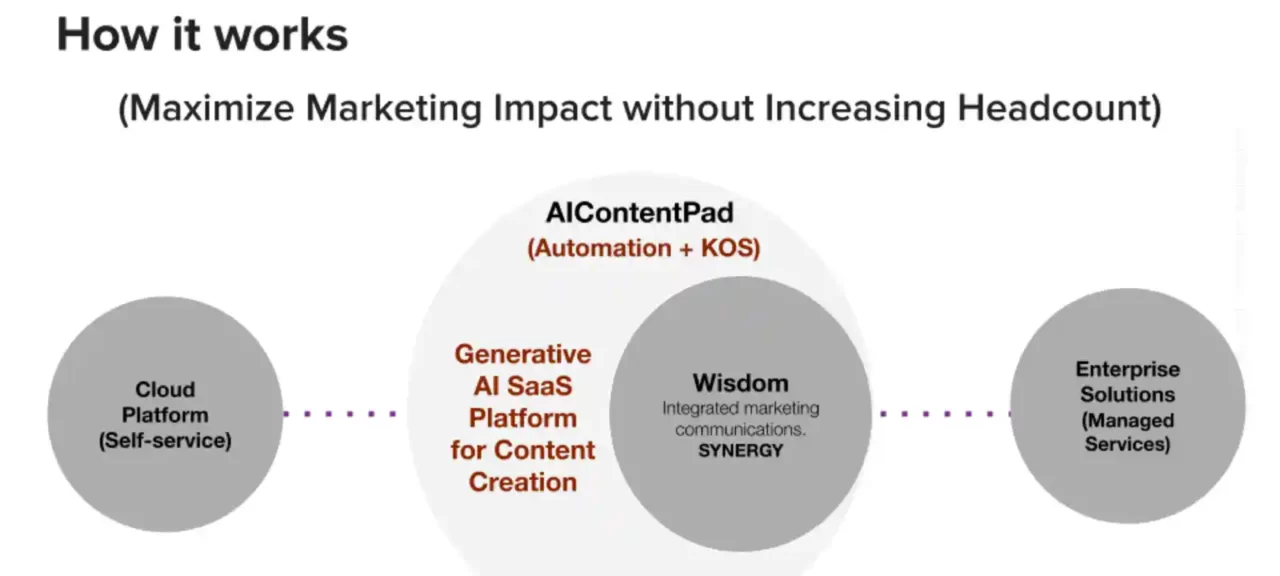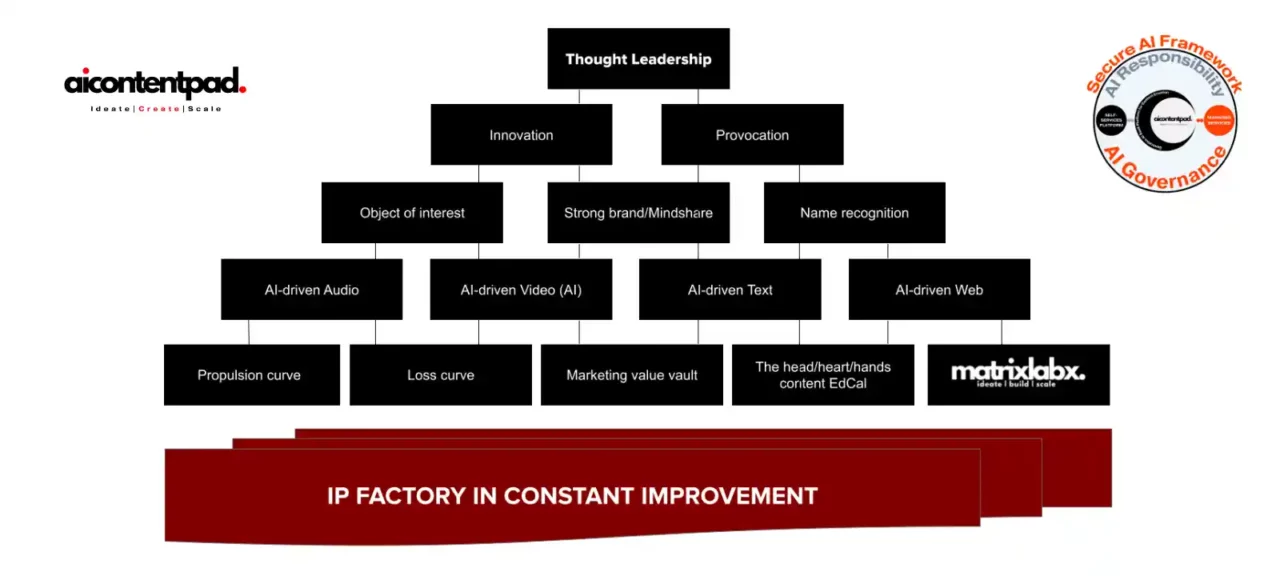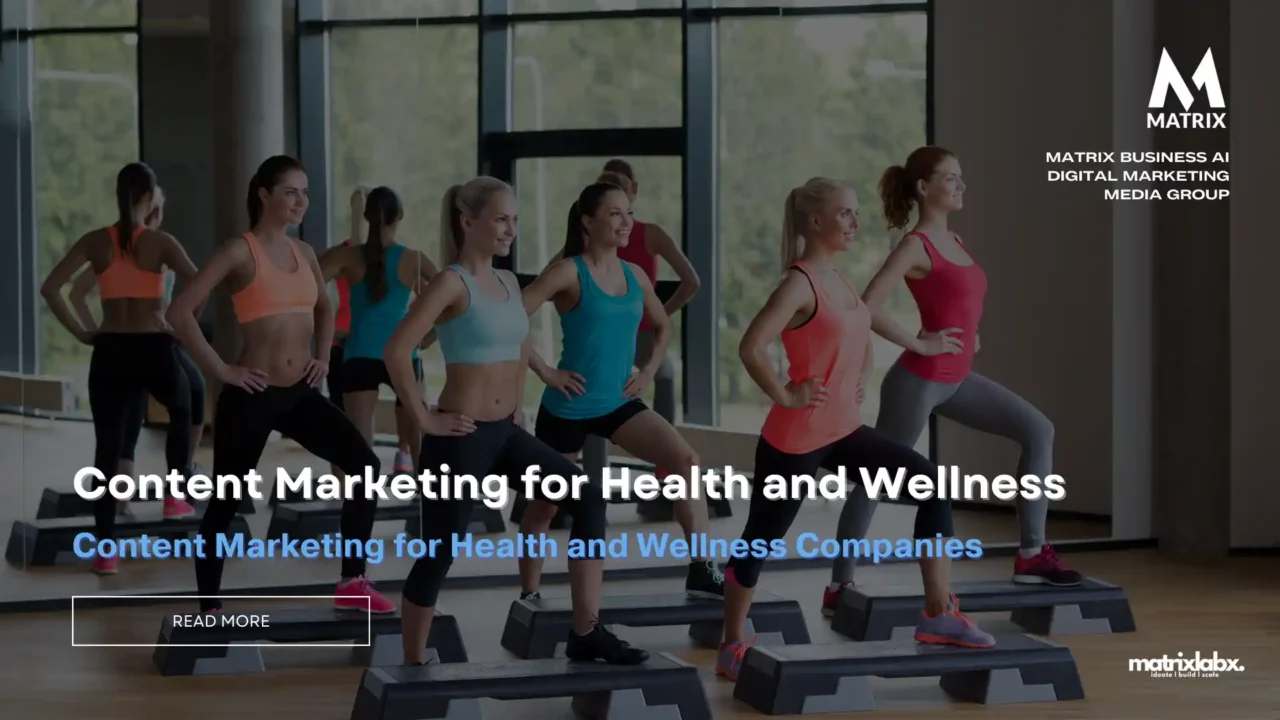Content Marketing for Health and Wellness Companies
Content Marketing for Health and Wellness Companies
The axiom “content is king” resonates with amplified significance in the dynamic health and wellness world.
The symbiosis between a well-crafted content marketing strategy and the burgeoning health and wellness industry is not only evident but essential.
Understanding the Audience: The Quintessence of Content Creation
The target audience, those striving for a harmonious blend of health and a healthy lifestyle, are not just consumers but seekers of a transformative narrative. They are individuals on a quest to enrich their lives, making it imperative to understand their journey deeply.
As the Chief Marketing Officer (CMO) of a health and fitness company, I understand that understanding our audience is the cornerstone of effective content creation.
Our audience is the lifeblood of our business, and creating content that resonates with them is crucial for achieving our marketing goals.
Why Understanding the Audience Is Essential
In the health and fitness industry, we are bombarded with constant information, making it difficult for us to give them. Understanding our audience allows us to cut through the noise and create content that is relevant, engaging, and valuable to them.
By understanding our audience, we can:
- Identify their needs and interests: What are our audience’s pain points, goals, and aspirations? What kind of information are they looking for?
- Tailor our content accordingly: We can create content to address their needs and interests.
- Speak their language: We can use the right tone, style, and format to communicate our message effectively.
- Build relationships: We can foster trust and loyalty by creating content demonstrating our understanding and care for them.

How to Understand Your Audience
There are several ways to gain a deeper understanding of your health and fitness audience:
- Conduct market research: This can involve surveys, interviews, focus groups, and social media analysis.
- Analyze website and social media data: This can provide insights into your audience’s demographics, interests, and behavior.
- Engage with your audience directly: Respond to comments, answer questions, and participate in discussions to get their feedback.
- Monitor industry trends: Stay up-to-date on the latest trends in health and fitness to ensure your content remains relevant.
The Quintessence of Content Creation
By understanding our audience, we can create content that is:
- Relevant: It addresses their needs, interests, and pain points.
- Engaging: It is informative, entertaining, and inspiring.
- Valuable: It gives them something they can use to improve their health and fitness.
- Authentic: It reflects our brand’s values and personality.
- Consistent: It maintains a consistent tone, style, and format.
By creating content that meets these criteria, we can effectively attract, engage, and convert our target audience.
Understanding our audience is not a one-time task but an ongoing process. As our audience’s needs and interests evolve, so should our content. By staying attuned to our audience, we can ensure that our content remains relevant, engaging, and valuable, helping us achieve our marketing goals and build a thriving health and fitness business.

Crafting Content that Resonates: Beyond the Surface-Level Solutions
Content must go beyond generic health tips and surface-level solutions to truly connect. It should delve into the nuances of living a balanced life, addressing the multifaceted challenges that the audience faces. The content should blend inspirational stories, practical advice, and scientific insights tailored to empower and educate.
A worldwide health and fitness company is crafting content that resonates with our audience and goes beyond simply providing surface-level solutions. It’s about understanding their deepest aspirations, addressing their hidden struggles, and connecting with them emotionally.
Surface-Level Solutions vs. Deep-Rooted Connection
The fitness industry is saturated with quick fixes and superficial advice. Companies often focus on promoting products or services that promise immediate results without delving into the underlying causes of their audience’s challenges. This approach may attract attention in the short term but fails to create lasting engagement and loyalty.
True content resonance stems from understanding the deeper motivations and challenges that drive our audience’s health and fitness journeys. It’s about recognizing that their goals extend beyond physical transformation. They seek to cultivate self-confidence, overcome self-doubt, and embrace a healthier lifestyle for well-being.
The Power of Emotional Resonance
When we connect with our audience emotionally, we tap into their core values, aspirations, and fears. We become a trusted ally in their journey towards holistic health and well-being. Our content becomes a beacon of inspiration, a source of motivation, and a catalyst for personal growth.
To achieve this level of connection, we must go beyond simply providing workout routines or nutrition plans. We must delve into the psychology of behavior change, understanding the emotional barriers that prevent individuals from achieving their goals. We must address their fears of failure, struggles with self-acceptance, and doubts about their ability to transform.
Crafting Content that Resonates: A Holistic Approach

Creating content that resonates requires a holistic approach encompassing three key aspects:
- Understanding the Audience: We must deeply empathize with our audience, understanding their motivations, challenges, and aspirations.
- Emotional Storytelling: We must weave stories that connect with their emotions, inspiring them to believe in their potential for transformation.
- Actionable Insights: We must provide actionable insights and guidance that empower them to take concrete steps toward their goals.
Beyond Surface-Level Solutions, a Path to Enduring Success
By crafting content that resonates beyond surface-level solutions, we create a genuine connection with our audience, fostering trust, loyalty, and long-term engagement. We become partners in their health and fitness journeys, helping them achieve physical transformation and a deeper sense of well-being and fulfillment. This approach not only enhances brand reputation but also contributes to the overall well-being of our global community.
The Power of Storytelling: Humanizing Health and Wellness
Narratives that weave health and wellness principles into relatable experiences can profoundly impact the audience. These stories, whether success stories or journeys of resilience, serve as beacons of motivation.
As the Chief Marketing Officer (CMO) of a worldwide health and fitness company, I’m passionate about harnessing the power of storytelling to humanize health and wellness. Stories have the remarkable ability to connect with us on an emotional level, making complex health concepts relatable and inspiring. By weaving stories into our marketing strategies, we can effectively motivate individuals to embrace healthier lifestyles and achieve their well-being goals.
The Allure of Storytelling
Humans are wired for stories. Throughout history, we’ve gathered around campfires and shared tales, passing down knowledge, values, and experiences. This innate connection to stories stems from their ability to:
- Evoke emotions: Stories tap into our empathy and compassion, allowing us to connect with characters and their experiences.
- Convey complex ideas: Through narratives, we can simplify intricate health concepts and make them more understandable.
- Inspire action: Stories can motivate individuals to take action and make positive life changes.
Humanizing Health and Wellness Through Storytelling
In health and wellness, storytelling can transform abstract concepts into relatable experiences, fostering a deeper understanding of well-being. By showcasing real-life stories, we can
- Demonstrate the impact of healthy choices: Sharing stories of individuals who have transformed their lives through healthy habits can inspire others to make positive changes.
- Normalize challenges and setbacks: Stories that depict the struggles and triumphs of health journeys can help individuals feel less alone and more empowered to persevere.
- Promote diversity and inclusivity: By featuring a range of voices and experiences, we can create a more inclusive and representative image of health and wellness.
Strategies for Effective Storytelling in Health Marketing

To effectively leverage storytelling in health marketing, we must consider the following strategies:
- Authenticity: Stories should be genuine and relatable, reflecting the experiences of real people.
- Diversity: Represent various individuals, backgrounds, and health journeys.
- Emotional connection: Evoke empathy and understanding by tapping into the human experience.
- Clear message: Ensure the story conveys a clear, actionable health message.
- Multi-platform engagement: Utilize various channels, such as videos, articles, social media, and events, to share stories.
The Impact of Storytelling on Health Outcomes
Stories can influence health behaviors and outcomes. By effectively connecting with individuals through storytelling, we can:
- Increase awareness of health issues: Stories can raise awareness of prevalent health concerns and their potential impacts.
- Promote healthy habits: Stories can motivate individuals to adopt healthier behaviors like regular exercise and nutritious eating.
- Encourage preventive care: Stories can emphasize the importance of regular checkups and screenings.
- Support chronic disease management: Stories can inspire and guide individuals with chronic conditions.
In pursuing a healthier world, storytelling is a powerful tool to humanize health and wellness. By weaving stories into our marketing strategies, we can connect with individuals on an emotional level, inspire positive change, and ultimately promote well-being for all.
Educational Content: The Backbone of Trust

In-depth articles, podcasts, and videos that educate about various aspects of health, fitness, and nutrition, backed by scientific research, establish credibility. This type of content informs and positions the company as a thought leader.
As the Chief Marketing Officer (CMO) of a worldwide health and fitness company, I firmly believe that educational content is the backbone of trust. In today’s world, where consumers are increasingly skeptical and discerning, establishing trust with your audience is more important than ever. And one of the best ways to do that is by providing them with high-quality, educational content.
Why Educational Content is Vital
Educational content demonstrates your commitment to helping people achieve their health and fitness goals. It shows that you are interested in selling products or services and genuinely helping people improve their lives.
When you provide people with valuable information, they are more likely to see you as a credible and trustworthy source. This trust is essential for building long-lasting relationships with your customers.
How Educational Content Builds Trust
There are several ways that educational content can help you build trust with your audience:
- It positions you as an expert: You establish yourself as a health and fitness industry thought leader by sharing your knowledge and expertise.
- It demonstrates your commitment to customer education: When you prioritize providing valuable information over pushing sales, you care more about your customers’ well-being than your bottom line.
- It empowers your audience: By giving people the knowledge they need to make informed decisions about their health, you help them take control of their well-being.
Examples of Effective Educational Content: Educational content can take many different formats, including
- Blog posts. This is a great way to share long-form content on various health and fitness topics.
- Articles: Articles can be used to provide in-depth information on specific topics.
- Infographics: Infographics are a visually appealing way to present complex information in a digestible format.
- Videos: Videos can be used to demonstrate exercises, provide tips on nutrition, or share inspirational stories.
- Webinars: Webinars are a great way to host live events where you can interact with your audience in real time.
Creating a Culture of Education
Creating a culture of education within your company is important to reap the benefits of educational content. This means encouraging employees to share their knowledge with your customers. It also means investing in the development of high-quality educational materials.
By prioritizing educational content, you can build trust with your audience, establish yourself as a health and fitness industry leader, and ultimately grow your business.
In a world where trust is increasingly scarce, educational content is valuable. By providing your audience with high-quality, informative content, you can demonstrate your commitment to their well-being and establish yourself as a trusted source. Educational content is not just a marketing tool but an investment in your business’s future and your customers’ well-being.
Are Your Marketing Efforts a Shot in the Dark? Let’s Turn on the Spotlight!
Imagine having the clarity of seeing your marketing strategy from a bird’ s-eye view and understanding every nuance of your campaigns. Our comprehensive audit delves into the core of your marketing DNA, dissecting each campaign with surgical precision to identify the powerhouse strategies and weed out the underperformers.

Interactive Content: Engaging the Community
Quizzes, interactive infographics, and wellness challenges encourage active participation and foster a sense of community. This engagement is critical in building a loyal audience base that values the content provided.
Interactive content is indispensable for engaging our community and fostering a sense of belonging. In today’s digital landscape, where passive consumption is the norm, interactive content stands out by actively involving users in the experience, transforming them from mere spectators to active participants.
Interactive content goes beyond simply presenting information; it invites participation, encourages exploration, and sparks curiosity. It’s a dynamic and engaging medium that allows us to connect with our audience deeper, fostering a sense of community and shared purpose.
Why Interactive Content Matters
Interactive content offers many benefits for engaging our health and fitness community:
- Enhances Engagement: Interactive content breaks the monotony of traditional static content, keeping users actively involved and immersed in the experience. It transforms passive consumption into active participation, fostering a sense of curiosity and excitement.
- Promotes Personalized Experiences: Interactive content allows us to tailor the experience to each user’s needs and preferences. Providing personalized recommendations, quizzes, and interactive tools can create a more relevant and engaging experience for each community member.
- Boosts Brand Loyalty: Interactive content fosters a deeper connection with our audience, creating a sense of shared purpose and belonging. When users feel actively involved and valued, they are likelier to develop a strong loyalty to our brand.
- Gathers Valuable Insights: Interactive content provides valuable data about our audience’s preferences, behaviors, and challenges. This data can inform our future content creation, product development, and marketing strategies.
Examples of Effective Interactive Content
The possibilities for interactive content are endless, but here are a few examples that have proven to be particularly effective in engaging our health and fitness community:
- Interactive Fitness Challenges: Host virtual fitness challenges, encouraging users to track their progress, compete with friends, and earn rewards. This fosters community and motivation as users work together to achieve their fitness goals.
- Personalized Meal Planning Tools: Provide interactive meal planning tools that allow users to input their dietary restrictions, preferences, and activity levels to generate personalized meal plans. This empowers users to make informed decisions about their nutrition and supports their overall health goals.
- Virtual Fitness Classes: Various virtual fitness classes catering to different fitness levels and interests are offered. This provides our community with convenient access to expert instruction and motivation, regardless of location or schedule.
- Interactive Health Quizzes: Create engaging quizzes that assess users’ health knowledge, identify potential risk factors, and provide personalized recommendations. This empowers users to take proactive steps towards improving their health.
- Interactive Nutrition Guides: Develop interactive nutrition guides that allow users to explore different food groups, nutrient profiles, and recipe ideas. This promotes informed food choices and supports healthy eating habits.
Interactive content is a game-changer in the world of health and fitness marketing. By embracing interactive strategies, we can break through the noise, engage our audience on a deeper level, and foster a thriving health and fitness community. As we continue to innovate and explore new interactive formats, we can empower our members to take charge of their health, achieve their fitness goals, and embrace a healthier, more fulfilling lifestyle.
Leveraging User-Generated Content: Authenticity at its Best
Encouraging users to share their stories and experiences adds an authentic layer to the content strategy. This diversifies the content and enhances relatability, as real-life experiences resonate deeply with the audience.
As Chief Marketing Officer (CMO) of a global health and fitness company, I firmly believe that user-generated content (UGC) is an invaluable tool for our brand’s marketing strategy. UGC offers authenticity and relatability that traditional marketing methods often struggle to achieve.
What is User-Generated Content?
User-generated content (UGC) is any form created by users or customers rather than produced by the brand itself. This can include photos, videos, reviews, blog posts, social media posts, and more. UGC is often shared on social media platforms, giving it the potential to reach a wide audience.
Benefits of Leveraging UGC
There are numerous benefits to leveraging UGC in your marketing strategy. Here are a few of the key advantages:
- Authenticity: UGC provides a genuine and unfiltered perspective on your brand and products. It shows that real people are using and enjoying your products, which can be incredibly persuasive to potential customers.
- Relatability: UGC helps to create a sense of community and connection with your audience. When people see others using and enjoying your products, they are likelier to feel like they can fit in with your brand.
- Cost-effective: UGC is essentially free marketing. By encouraging your customers to create content for you, you save yourself the time and expense of producing it.
- Social proof: UGC serves as social proof, where people are likelier to take a certain action when they see that others have done it before. Positive UGC can be a powerful motivator for potential customers.
- Diverse perspectives: UGC provides a variety of perspectives on your brand and products, which can help you reach a wider audience and understand your customers better.
How to Leverage UGC Effectively
To effectively leverage UGC in your marketing strategy, it is important to follow a few key principles:
- Encourage UGC creation: Make it easy and attractive for your customers to create content for you. This could involve running contests, offering incentives, or simply providing a platform for them to share their experiences.
- Moderate and curate UGC: Not all UGC is created equal. Modifying and curating UGC is important to ensure it is high quality and aligns with your brand image.
- Share UGC across your channels: Once you have curated some great UGC, share it across your social media channels, website, and other marketing materials.
- Respond to and engage with UGC: Show your customers that you appreciate their content by responding to their posts, comments, and reviews.
- Give credit where credit is due: Always credit the creators of UGC. This is not only the right thing to do, but it will also encourage them to create more content for you.
Examples of Successful UGC Campaigns
Many examples of companies have successfully leveraged UGC in their marketing campaigns. Here are a few notable examples:
- Nike’s #JustDoIt campaign: Nike’s #JustDoIt campaign is one of the most successful UGC campaigns ever. The campaign encouraged people to share their stories of overcoming challenges and achieving their fitness goals.
- Coca-Cola’s Share a Coke campaign: Coca-Cola’s Share a Coke campaign encouraged people to share photos of themselves enjoying Coca-Cola with their friends and family. The campaign was a huge success, generating millions of social media mentions.
- GoPro’s #GoProAwards campaign: GoPro’s #GoProAwards campaign encourages people to share their most stunning and creative GoPro videos. The campaign has helped make GoPro one of the world’s most popular action camera brands.
User-generated content is a powerful marketing tool that can help you build brand awareness, engage with your audience, and drive sales. By leveraging UGC effectively, you can tap into the authenticity and relatability that traditional marketing methods often lack.
You should experiment with UGC today and see how it can benefit your health and fitness brand.
SEO: The Art and Science of Being Found
Optimizing content for search engines is non-negotiable. This involves using targeted keywords, crafting engaging meta descriptions, and creating content that answers the specific queries of the target audience.
As the SEO Manager of a worldwide health and fitness company, I understand that SEO is an intricate blend of art and science. It’s about understanding the complex algorithms search engines use to rank websites while crafting compelling content that resonates with our target audience.
The Science of SEO
The technical aspects of SEO involve optimizing our website and content to make it easier for search engines to crawl, index, and understand. This includes:
- Keyword research: Identify the relevant keywords our target audience searches for and incorporate them naturally into our content.
- On-page optimization: Ensuring our website is structured so search engines can easily navigate and understand. This includes using relevant title tags, meta descriptions, and header tags.
- Technical SEO: Ensuring our website is technically sound and free of any errors that could hinder its ranking. This includes optimizing page loading speed, ensuring mobile-friendliness, and using proper redirects.
The Art of SEO
While the technical aspects of SEO are crucial, the art of SEO is equally important. This involves creating high-quality content that is informative, engaging and optimized for search engines. It’s about understanding the intent behind search queries and crafting content that truly meets the needs of our audience.

Creating Compelling Content
To create compelling content that resonates with our target audience, we need to consider the following:
- Relevance: Our content should be directly relevant to the needs and interests of our audience.
- Accuracy: Our information should be up-to-date and backed by credible sources.
- Engaging writing: Our writing style should be clear, concise, and engaging, making the content enjoyable.
- Visual appeal: Incorporating relevant images, videos, and infographics can enhance the visual appeal of our content.
- Call to action: Clear calls to action encourage our audience to take the next step, whether subscribing to our newsletter, downloading a resource, or purchasing.
Balancing Art and Science
The key to successful SEO lies in balancing the art and science of it all. We need to understand the technical aspects of search engine algorithms and create genuinely valuable content for our audience. Combining these elements can increase our website’s visibility, attract more traffic, and achieve our business goals.
SEO: An Ongoing Process
SEO is not a one-time task; it’s an ongoing process that requires continuous monitoring and adaptation. Search engine algorithms are constantly evolving, and we need to stay updated on the latest trends and best practices to ensure our website remains competitive.
SEO is essential for any health and fitness company that wants to reach a wider audience and achieve its business goals. Understanding the science behind search engines and mastering the art of creating compelling content can increase our website’s visibility, attract more qualified traffic, and ultimately grow our business.
Social Media Strategy: Creating a Ripple Effect
Platforms like Instagram and Facebook are fertile grounds for disseminating health and wellness content. However, the strategy here must be tailored to each platform’s nuances, utilizing each’s strengths to amplify the reach.
Sure, here is a social media strategy for a worldwide health and fitness company to create a ripple effect:
Objective:
To create a global community of health and fitness enthusiasts by leveraging social media to share inspiring content, foster engagement, and drive brand awareness.
Target Audience:
Health-conscious individuals of all ages, backgrounds, and fitness levels seek inspiration, motivation, and support on their wellness journeys.
Social Media Platforms:
- Instagram: A visually-driven platform ideal for sharing engaging fitness content, healthy recipes, and inspirational stories.
- Facebook: A versatile platform for sharing a variety of content formats, including text posts, images, videos, and live streams.
- Twitter: A real-time platform for sharing news and updates and engaging in conversations with the health and fitness community.
- YouTube: A video-sharing platform for creating in-depth workout tutorials, nutrition guides, and motivational vlogs.
Content Strategy:
- Inspiring Content: Share visually appealing and motivating content that showcases real people achieving their fitness goals.
- Engaging Challenges: Host interactive challenges and contests to encourage participation, camaraderie, and brand advocacy.
- Educational Resources: Provide valuable information on nutrition, exercise techniques, and mental well-being.
- Community Building: Encourage conversations and interactions among followers to foster a sense of belonging and support.
- User-Generated Content: Repost and share content created by followers to amplify their voices and showcase the community’s diversity.
Paid Advertising:
- Utilize targeted social media advertising to reach a wider audience and drive traffic to the company’s website or app.
- Collaborate with influencers in the health and wellness space to expand reach and enhance brand credibility.
Measurement and Analytics:
- Regularly track social media metrics, such as follower growth, engagement rates, and website traffic, to measure the effectiveness of campaigns and make data-driven decisions.
- Utilize social listening tools to monitor online conversations about the brand and identify opportunities to address customer feedback and improve brand reputation.
Creating a Ripple Effect:
- Encourage followers to share content with their friends and networks to amplify the reach of the company’s message.
- Partner with organizations and initiatives that align with the company’s values to expand the scope of impact.
- Encourage followers to participate in local events and activities that promote health and wellness.
- Utilize social media to share success stories and testimonials from satisfied customers to inspire others to take action.
By implementing this comprehensive social media strategy, a worldwide health and fitness company can effectively connect with its target audience, foster a thriving community, and create a lasting ripple effect that promotes health, wellness, and positive change.
Email Marketing: Personalization Par Excellence
Customized newsletters that offer personalized content, such as tips based on the subscriber’s wellness goals, reinforce the relationship between the brand and its audience.
Sure, here is an explanation of email marketing personalization from the perspective of a social media manager of a worldwide health and fitness company:
Email Marketing: Personalization Par Excellence
Email marketing remains a powerful tool for connecting with your audience and driving results in the ever-evolving digital landscape. However, in today’s cluttered inboxes, simply sending out mass emails is no longer enough. You need to personalize your email marketing efforts to capture attention and make an impact.
What is personalization?
Personalization is tailoring your email marketing messages to individual subscribers based on their unique preferences, interests, and behaviors. This can be done in a variety of ways, such as:
- Segmenting your email list: Divide your subscribers into smaller groups based on shared characteristics, such as demographics, purchase history, or website activity.
- Using dynamic content: Insert personalized information into your emails, such as the subscriber’s name, location, or recent product views.
- Tailoring your messaging: Use language and imagery that resonates with each segment of your audience.
Why is personalization important?
Personalization is essential for effective email marketing because it:
- Increases engagement: Personalized emails are more likely to be opened, read, and clicked on than generic ones.
- Boosts conversions: Personalized emails can lead to higher conversion rates, as they are more relevant to the subscriber’s needs and interests.
- Strengthens relationships: Personalization demonstrates that you value your subscribers and care about their experiences.
How to Personalize Your Email Marketing
There are many ways to personalize your email marketing, including:
- Collecting data: Gather information about your subscribers through website forms, surveys, and social media interactions.
- Using email marketing platforms: Many email marketing platforms offer tools for segmentation, dynamic content, and personalization.
- Testing and refining: Experiment with different personalization techniques to see what works best for your audience.
Personalization in action
Here are some examples of how health and fitness companies are using personalization to improve their email marketing:
- Nike: Nike uses segmentation to send targeted emails based on subscribers’ athletic interests and performance goals.
- Under Armour: Under Armour uses dynamic content to insert personalized product recommendations into emails based on subscribers’ purchase history.
- Peloton: Peloton uses behavioral data to send emails at the right time, such as after a subscriber misses a workout or completes a new milestone.
Personalization is the future of email marketing. By taking the time to understand your audience and tailor your emails accordingly, you can achieve greater engagement, conversions, and customer loyalty.
Additional tips for email marketing personalization:
- Use a clear and concise subject line.
- Keep your emails visually appealing and easy to read.
- Use a strong call to action.
- Test different personalization techniques to see what works best for your audience.
- Make sure your emails are mobile-friendly.
- Comply with all anti-spam regulations.
Measurement and Adaptation: The Continuous Evolution
Analyzing the performance of different types of content is crucial. This involves looking at engagement metrics and adapting the strategy based on what resonates most with the audience.
As a worldwide health and fitness company owner, I firmly believe that continuous measurement and adaptation are essential for our success in this ever-changing industry. We can provide our customers with the best possible products and services by constantly evaluating our performance and making data-driven decisions.
Why Measurement and Adaptation are Essential
The health and fitness industry constantly evolves, with new trends, technologies, and consumer preferences always emerging. To stay ahead of the curve, we need to be able to measure our progress and adapt our strategies accordingly.
Measurement allows us to:
- Track our progress: We can identify what is working well and what is not and make adjustments based on our findings.
- Identify areas for improvement: We can pinpoint areas where we can improve our products, services, and marketing efforts.
- Make informed decisions: We can base our decisions on data rather than guesswork.
- Stay accountable: We can hold ourselves and our team accountable for achieving our goals.
Adaptation allows us to:
- Respond to changing trends: We can adjust our offerings and marketing strategies to meet the needs of our evolving customer base.
- Stay competitive: We can keep up with the latest innovations and stay ahead.
- Optimize our performance: We can continuously improve our products, services, and marketing efforts to maximize our return on investment.
How to Measure and Adapt Your Health and Fitness Company
There are several key metrics that we can track to measure the success of our health and fitness company:
- Customer acquisition: How many new customers are we acquiring?
- Customer retention: How many of our existing customers are we retaining?
- Customer satisfaction: How satisfied are our customers with our products and services?
- Revenue growth: How is our revenue growing over time?
- Profitability: How profitable is our business?
We can also use a variety of data sources to measure these metrics, including:
- Website analytics: This can provide insights into how people interact with our website.
- Social media analytics can show how people engage with our brand on social media.
- Customer feedback: This can be obtained through surveys, interviews, and online reviews.
- Sales data can tell us how well our products and services are selling.
Once we have collected data on these metrics, we can use it to identify areas for improvement and make data-driven decisions about how to adapt our business. For example, if our customer satisfaction is low, we may need to improve the quality of our products or services. Or, if we find that our revenue growth is slowing down, we may need to invest in new marketing campaigns to reach new customers.
Measurement and adaptation are not just one-time projects; they are ongoing processes that should be embedded in the DNA of our health and fitness company. By continuously evaluating our performance and making data-driven decisions, we can ensure that we provide our customers with the best possible products and services and that we are well-positioned for success in the ever-changing health and fitness industry.
Are Your Marketing Efforts a Shot in the Dark? Let’s Turn on the Spotlight!
Imagine having the clarity of seeing your marketing strategy from a bird’ s-eye view and understanding every nuance of your campaigns. Our comprehensive audit delves into the core of your marketing DNA, dissecting each campaign with surgical precision to identify the powerhouse strategies and weed out the underperformers.

The Future of Content in Health and Wellness
Integrating AI and VR in content strategies holds immense potential as we look ahead. These technologies can offer immersive and personalized experiences, taking content engagement to new heights.
Content marketing for health and wellness companies is not just about selling a product or service but about inspiring a lifestyle. It’s about creating a narrative that resonates, educates, and empowers.
The blend of empathy, education, and engagement in content can transform a casual reader into a loyal brand advocate and, more importantly, a healthier individual in their journey towards wellness.
The Future of Content in Health and Wellness
The health and wellness industry is constantly evolving, and so is how we consume content about it. In the past, we might have relied on magazines, newspapers, and books for our health information. But today, we have access to a wealth of information online, including social media, blogs, and video tutorials.
What are some trends shaping the future of content in health and wellness?
Here are a few trends that I believe will shape the future of content in health and wellness:
- Personalization: Content will become increasingly personalized and tailored to the individual’s needs and interests. This could be done through AI-powered recommendations or by allowing users to create personalized health and wellness plans.
- Interactivity: Content will become more interactive, with users able to engage with it in new and meaningful ways. This could include virtual reality experiences, augmented reality overlays, and interactive games and quizzes.
- Video: Video content will continue to grow in popularity, as it is a more engaging and consumable format than text. We can expect more health and wellness videos on YouTube, Facebook, and other social media platforms.
- Wearable technology: Wearable technology is increasingly integrated with health and wellness content. For example, users can track their fitness progress and receive personalized health and wellness tips through smartwatches and fitness trackers.
- Social media: Social media will continue to play a major role in consuming health and wellness content. People will use social media to connect with other health-conscious individuals, share their progress, and discover new health and wellness trends.
How can businesses and organizations create effective health and wellness content?
Here are a few tips for creating effective health and wellness content:
- Know your audience: Who are you trying to reach with your content? What are their needs, interests, and pain points?
- Be credible: Make sure your content is accurate and up-to-date. Cite your sources and use a professional tone.
- Be engaging: Use storytelling, visuals, and interactive elements to make your content more engaging.
- Be consistent: Publish content regularly to keep your audience engaged.
- Be social: Promote your content on social media and other online platforms.
- Be patient: Building a following and seeing results from your content marketing efforts takes time.
The future of content in health and wellness is bright. By following these tips, you can create effective content to help you reach your target audience and achieve your business goals.

